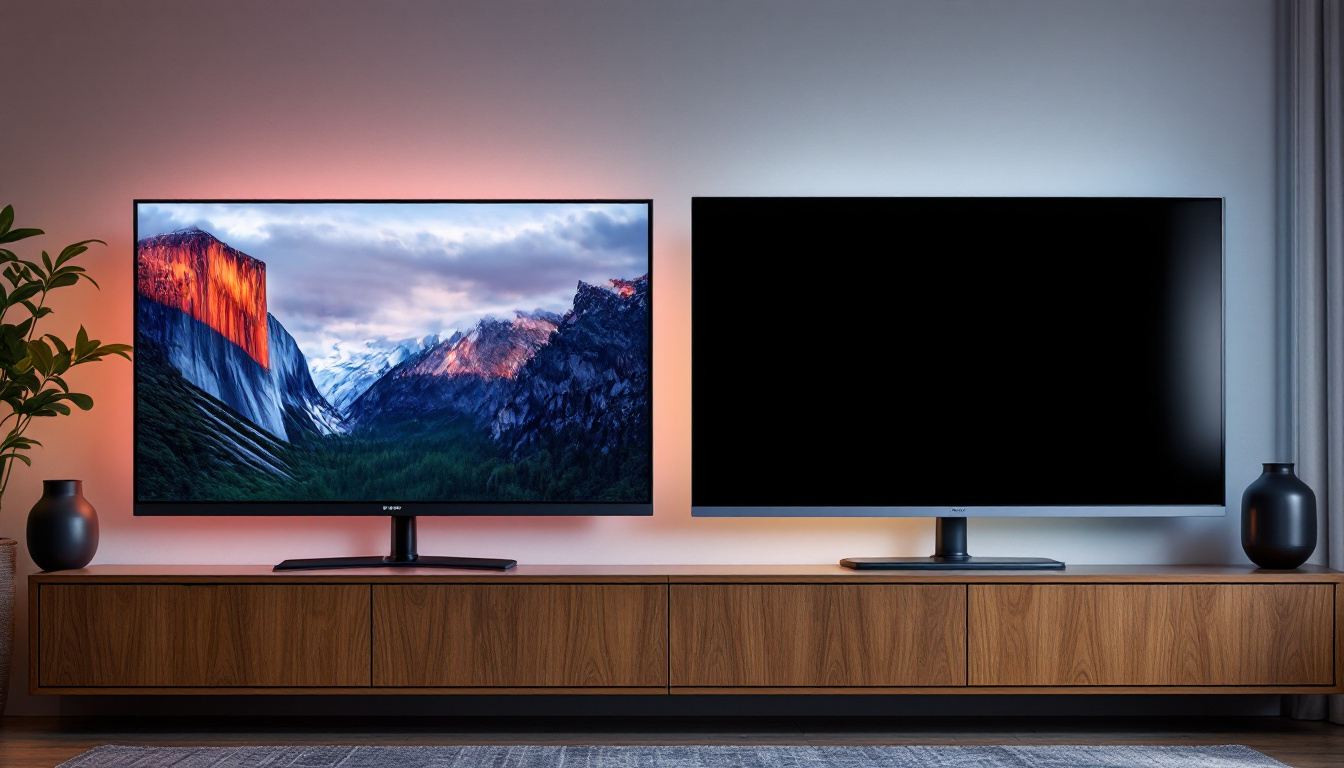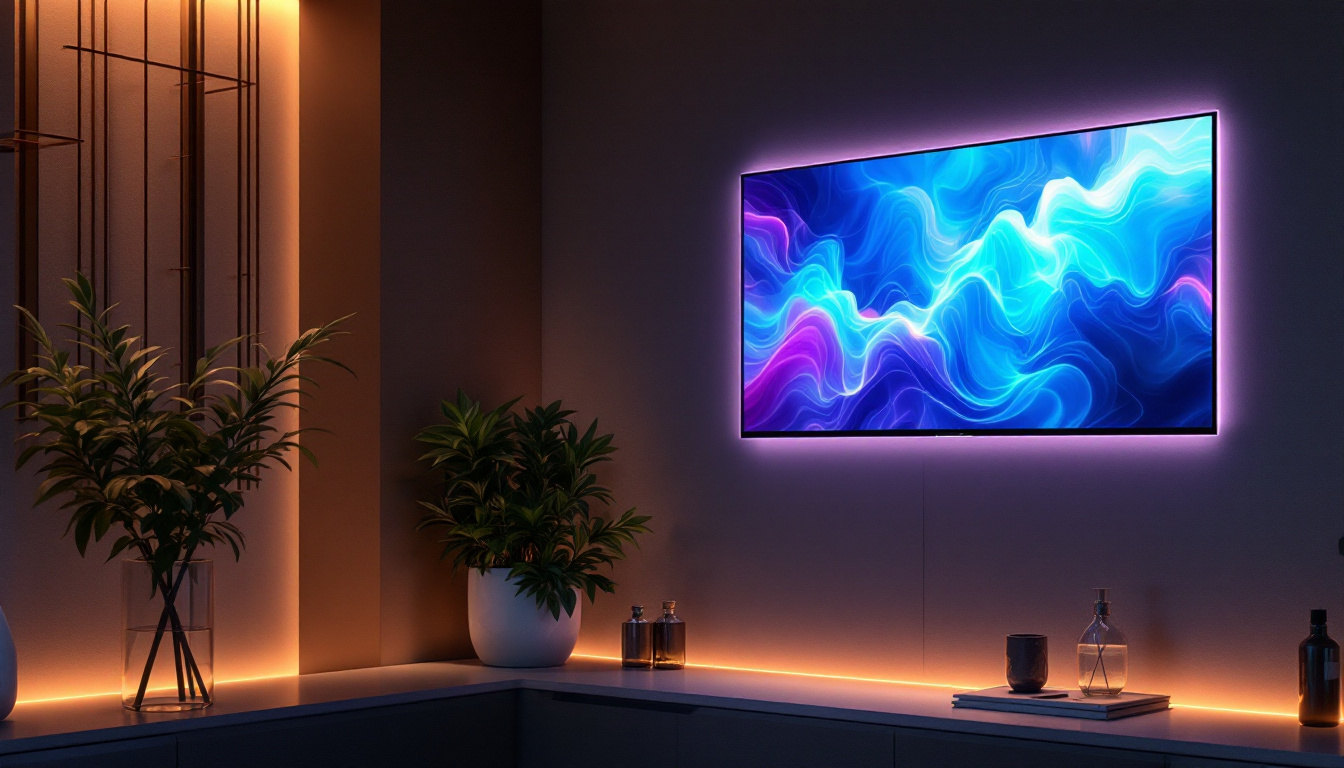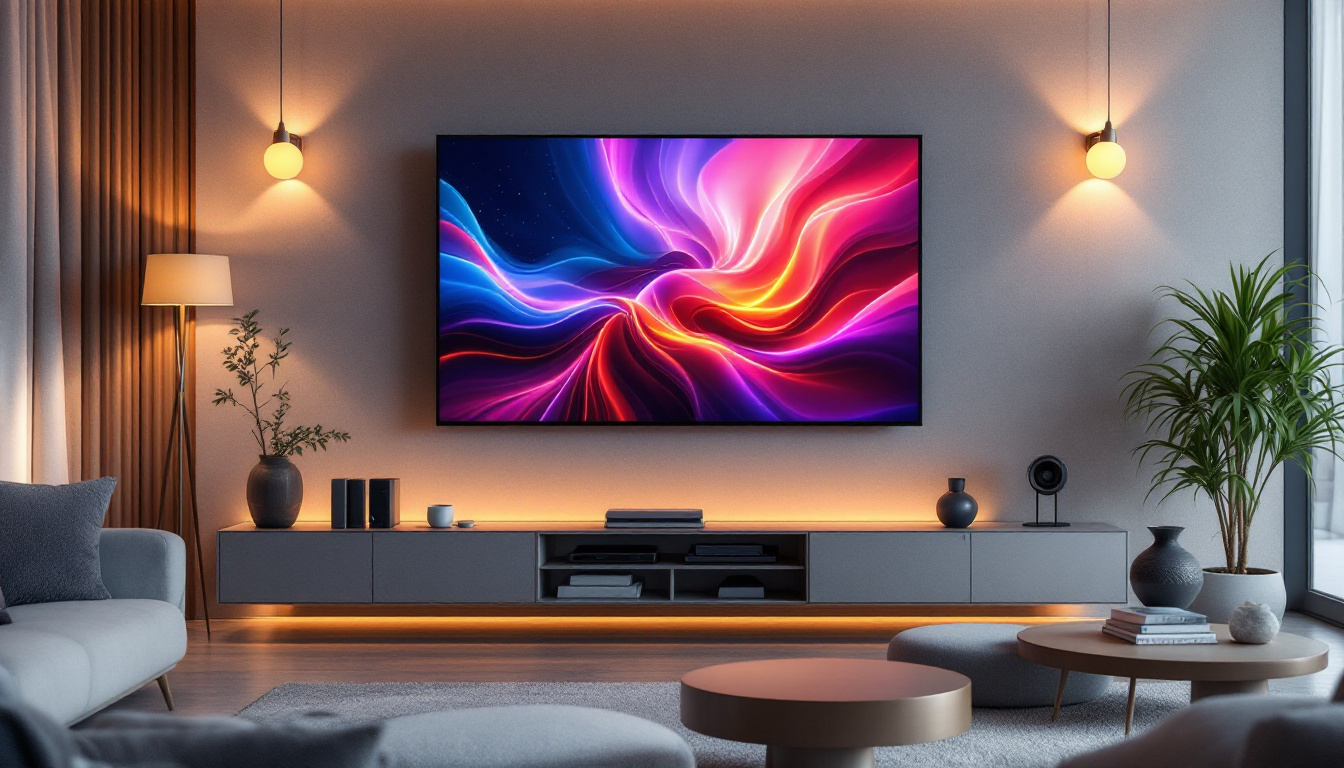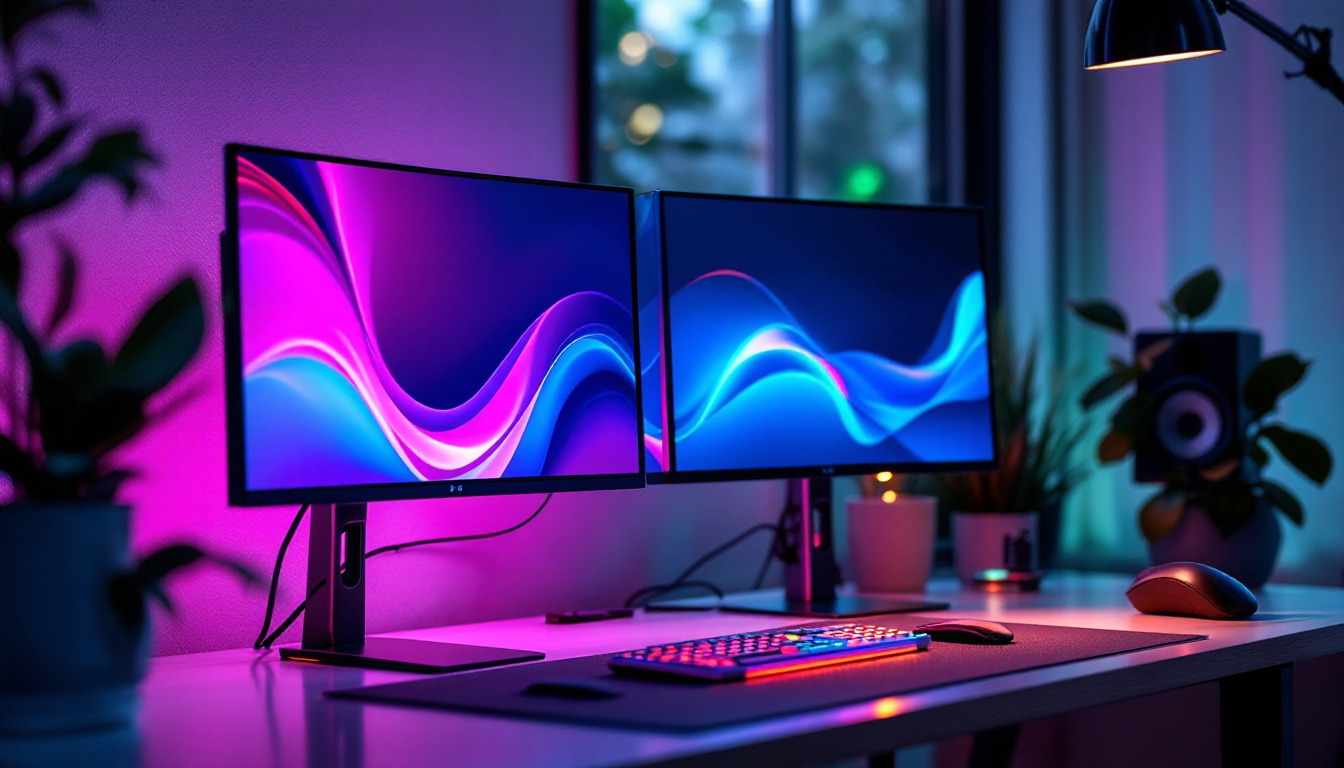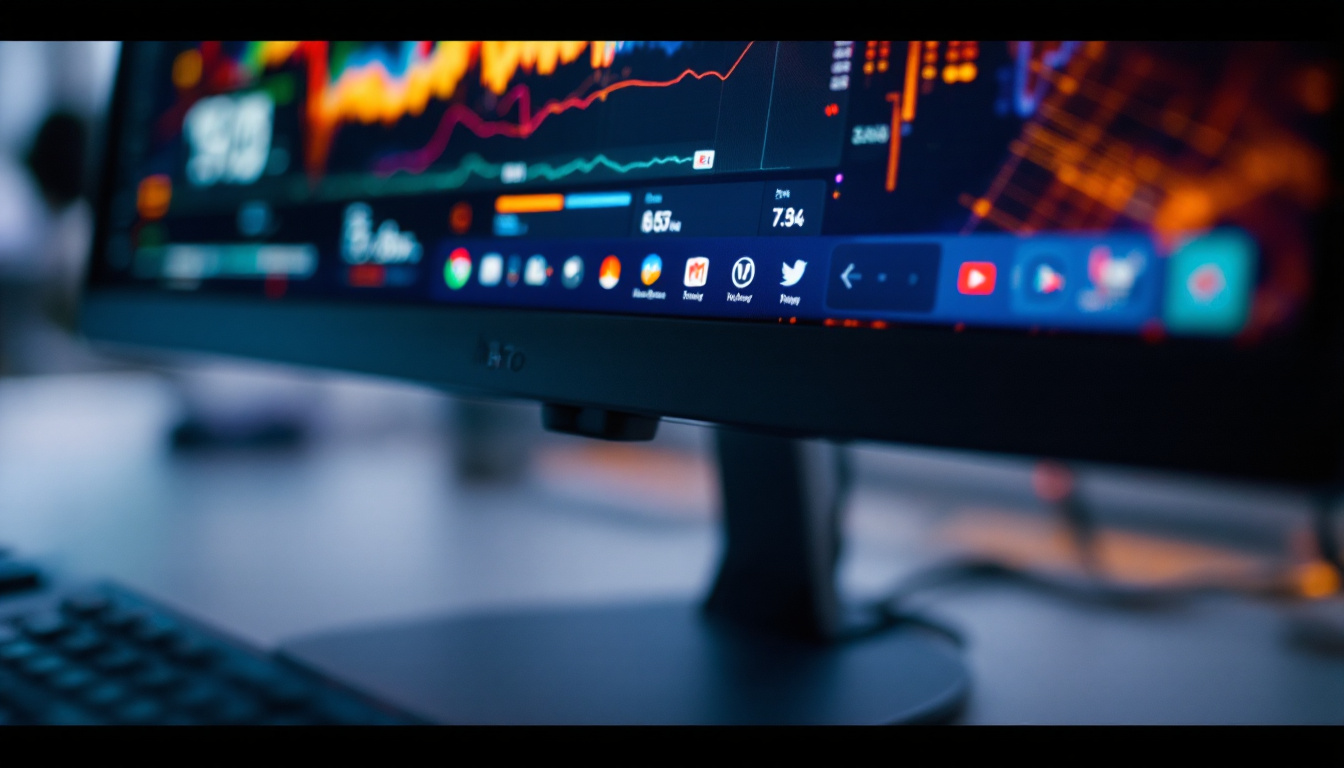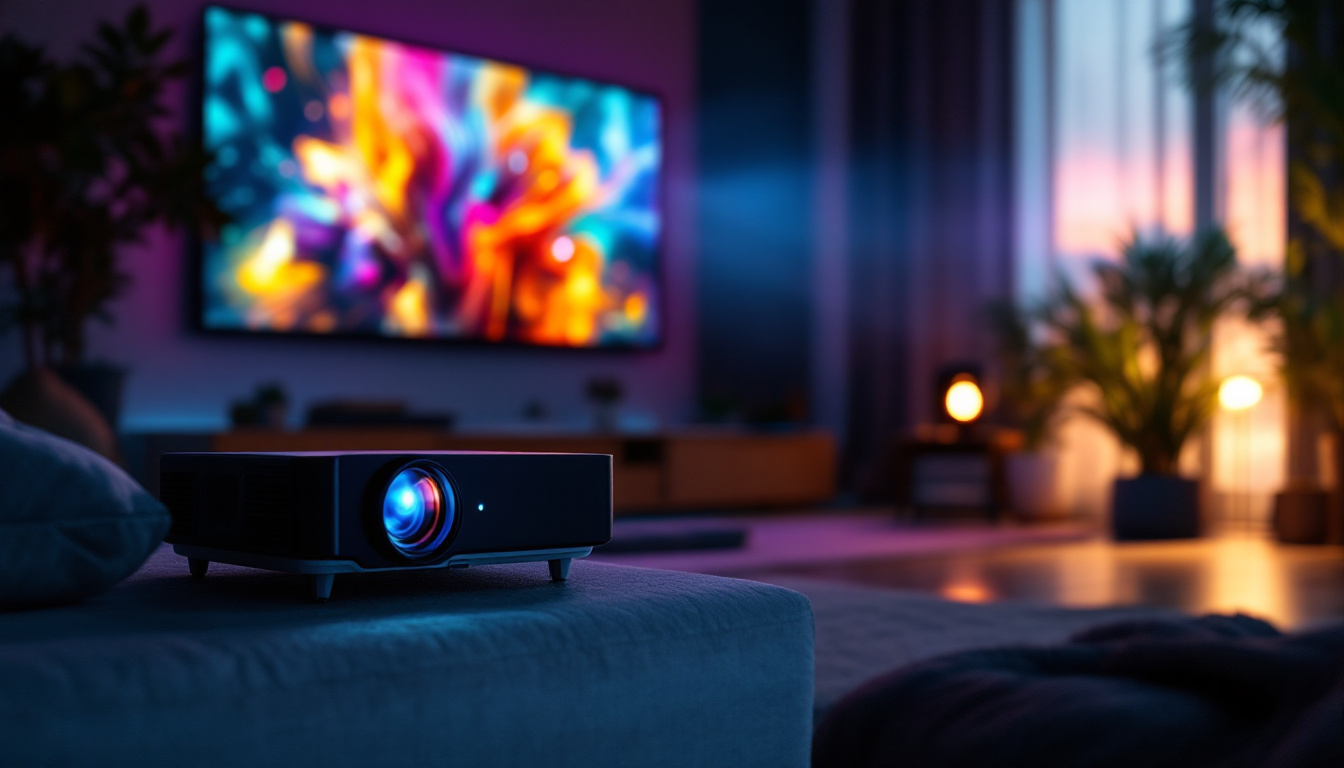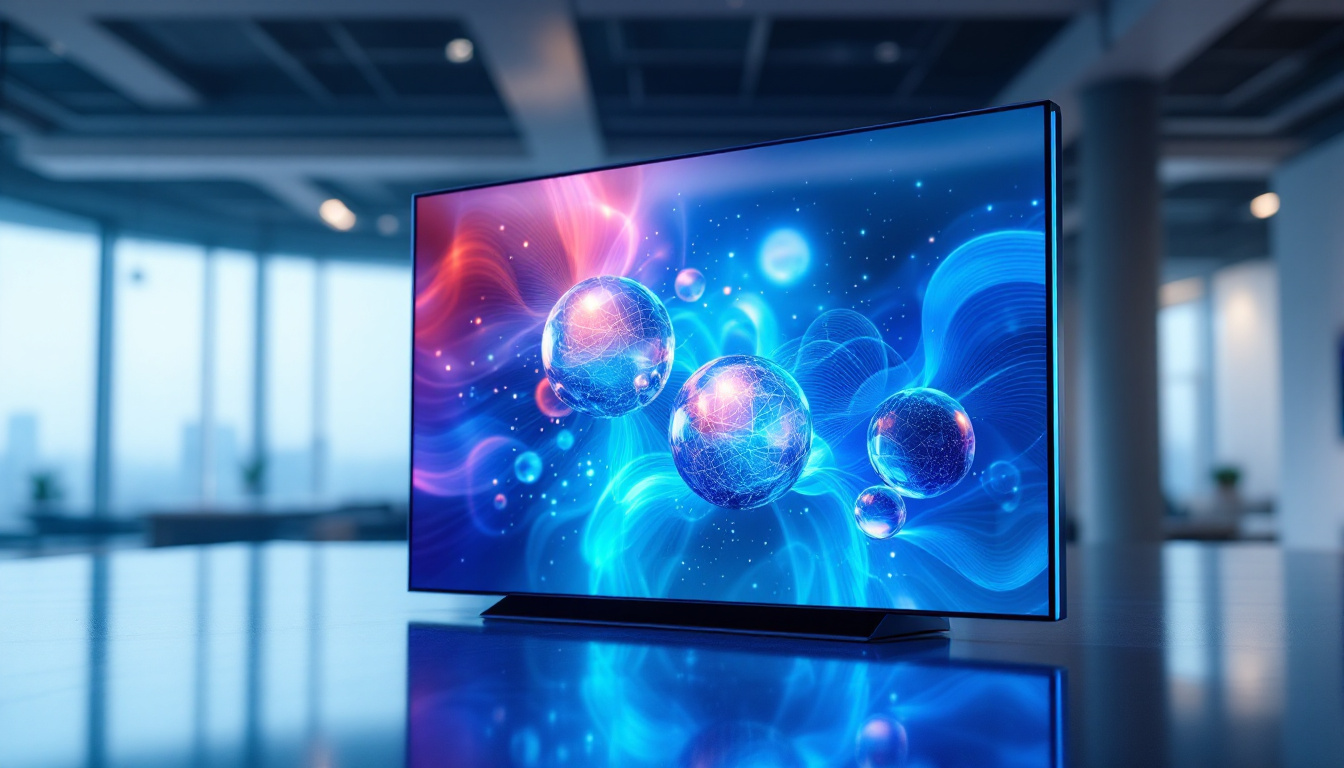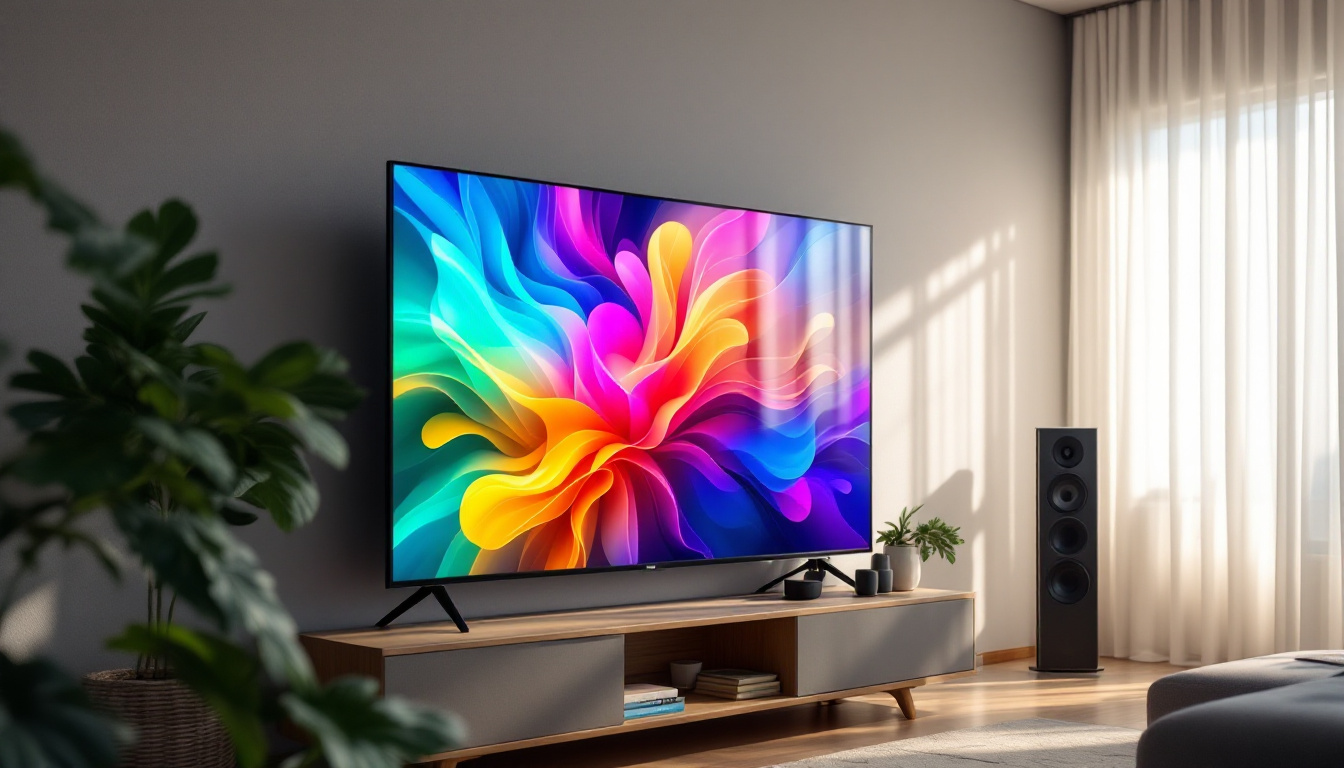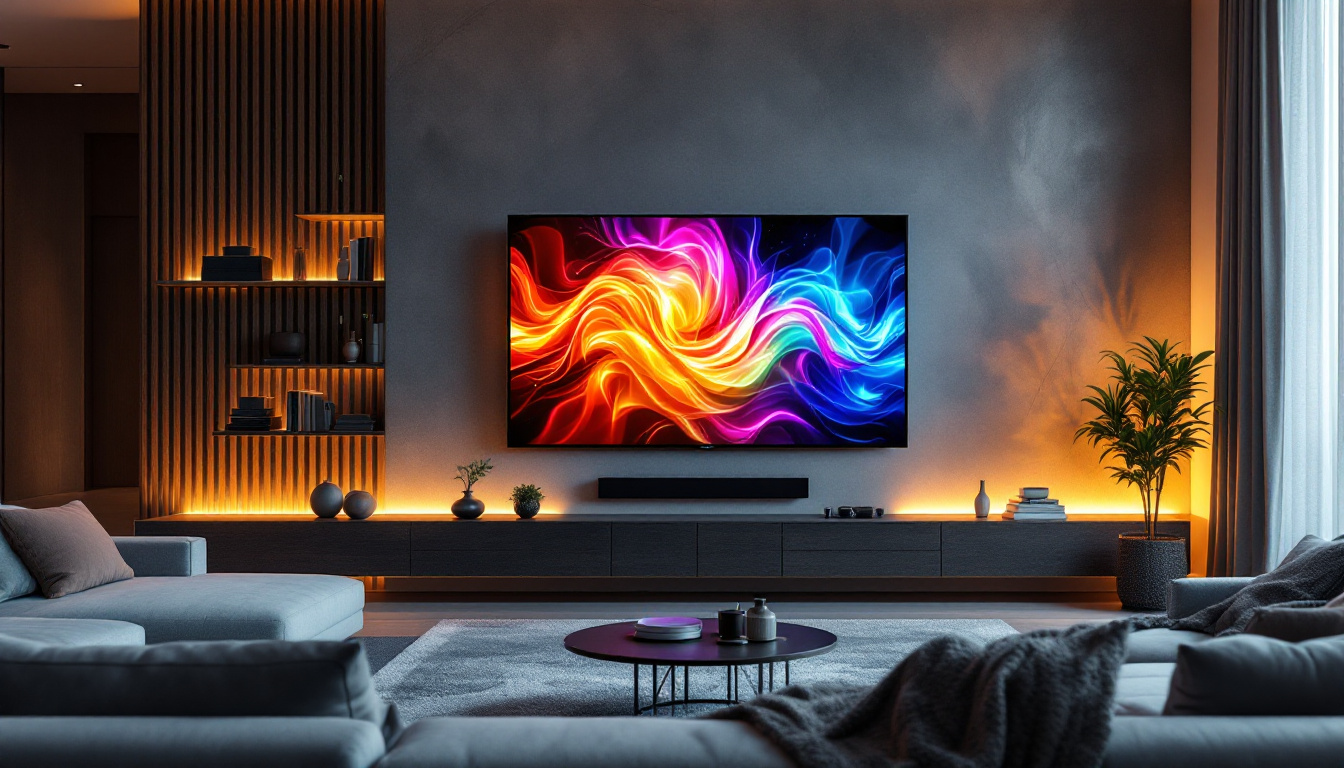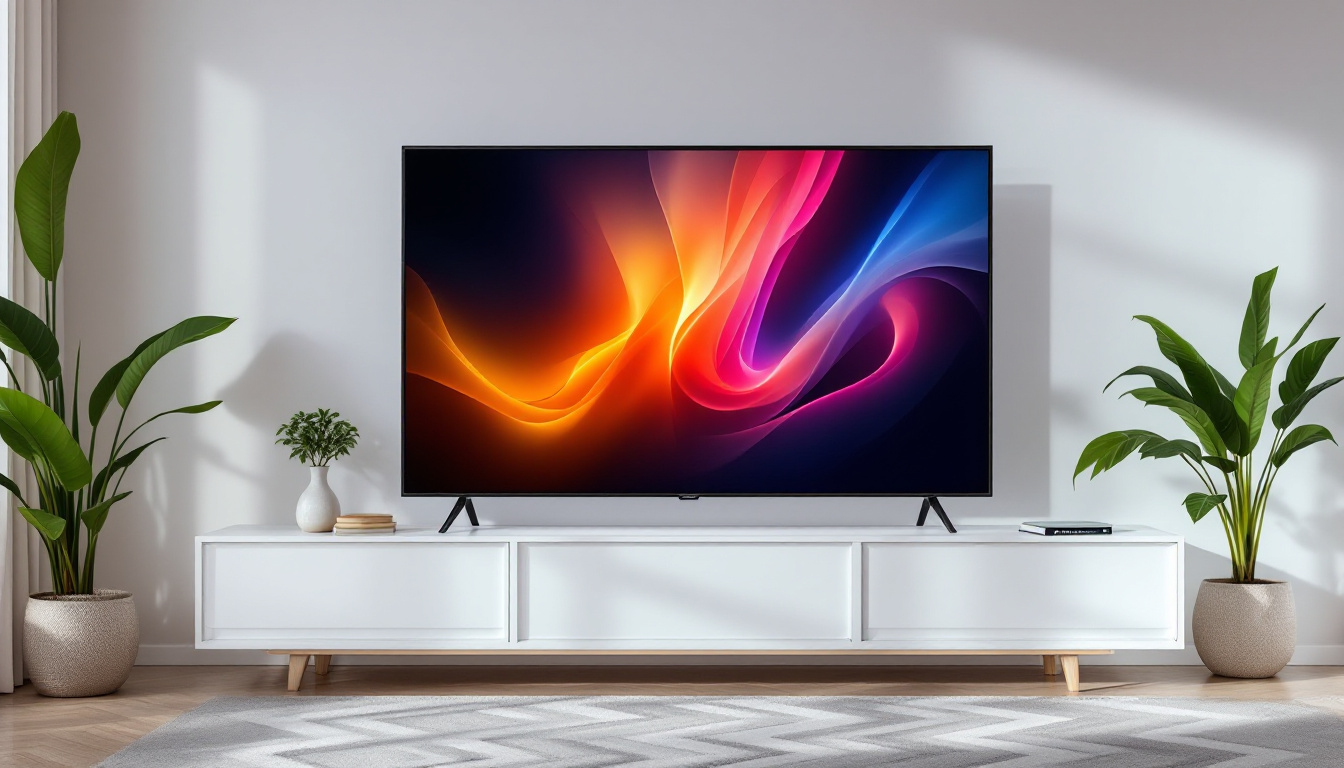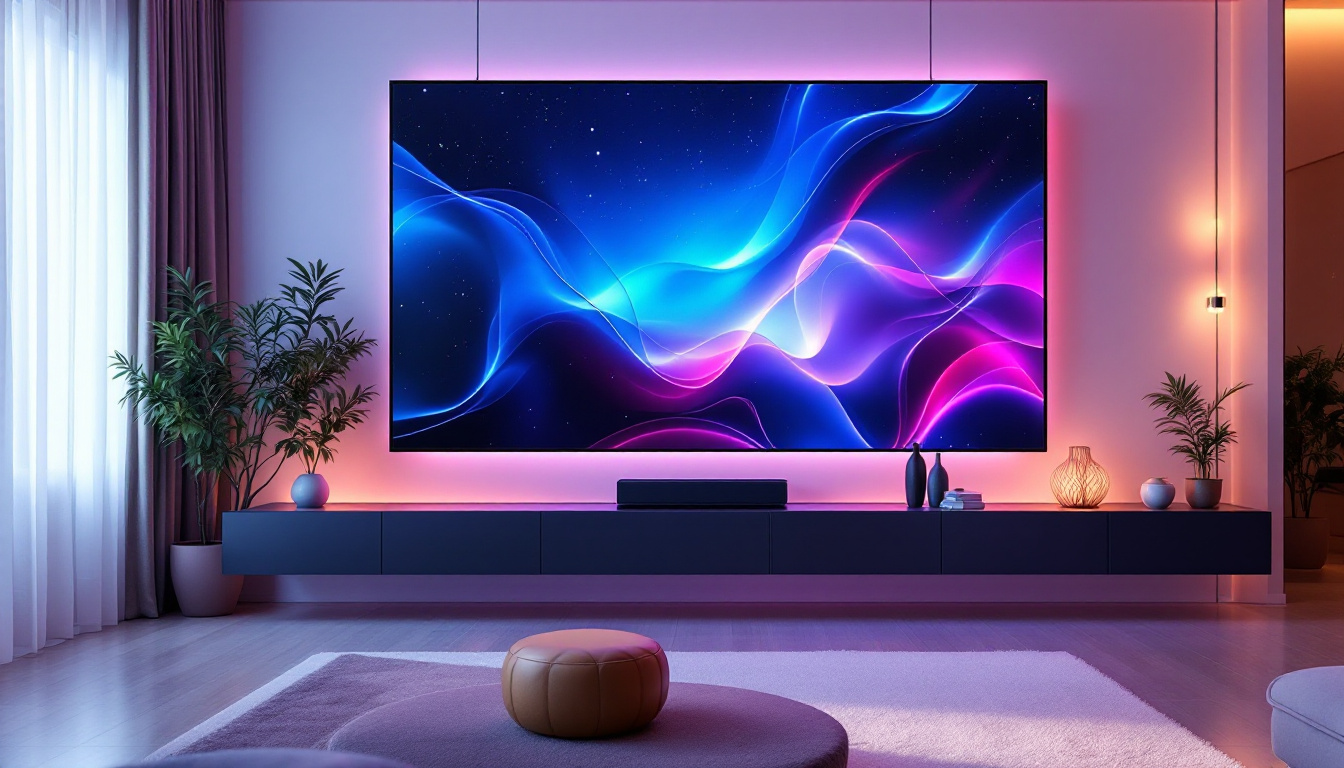In today’s fast-paced digital landscape, the demand for high-quality displays is ever-increasing. Among the various types of monitors available, 4K touch screen monitors stand out due to their superior resolution and interactive capabilities. This article delves into the intricacies of 4K touch screen monitors, focusing on LED display technology and its implications for users.
Understanding 4K Resolution
4K resolution, also known as Ultra High Definition (UHD), refers to a display resolution of approximately 3840 x 2160 pixels. This is four times the pixel count of Full HD (1920 x 1080), resulting in sharper images and more vibrant colors. The increased pixel density allows for finer details, making 4K displays ideal for various applications, from professional design work to immersive gaming experiences.
The Benefits of 4K Resolution
One of the primary advantages of 4K resolution is the clarity it offers. Users can enjoy a more detailed and realistic viewing experience, whether they are watching movies, playing video games, or working on graphic design projects. The enhanced resolution also reduces eye strain, as text and images appear smoother and more defined.
Moreover, 4K displays are becoming increasingly accessible, with a wide range of devices supporting this resolution. From televisions to computer monitors, the proliferation of 4K technology means that consumers can enjoy high-quality visuals across multiple platforms.
In addition to its visual benefits, 4K resolution plays a significant role in the realm of content creation. Filmmakers and photographers are now able to capture stunning visuals with incredible detail, allowing for greater creative freedom in post-production. The ability to crop and zoom into footage without losing quality opens up new possibilities for storytelling and artistic expression. Furthermore, as streaming services continue to adopt 4K content, viewers can experience their favorite shows and movies in unprecedented detail, enhancing the overall enjoyment of the viewing experience.
Another notable aspect of 4K technology is its impact on gaming. Gamers can immerse themselves in richly detailed worlds, where textures and environments come to life with stunning realism. The combination of high refresh rates and 4K resolution creates a more fluid and engaging gameplay experience. Additionally, as gaming consoles and PCs evolve to support 4K gaming, the demand for high-quality displays will likely continue to grow, pushing the boundaries of what is possible in interactive entertainment.
Touch Screen Technology
Touch screen technology has revolutionized how users interact with devices. By allowing direct manipulation of on-screen elements, touch screens provide a more intuitive and engaging experience. This technology is particularly beneficial in educational settings, retail environments, and professional applications where collaboration is key. In classrooms, for instance, interactive touch screens facilitate dynamic lessons, enabling teachers to engage students through multimedia presentations and interactive quizzes. In retail, touch screens enhance customer experience by allowing users to browse products, check prices, and even place orders directly from kiosks, streamlining the shopping process.
Types of Touch Screen Technologies
There are several types of touch screen technologies, each with its own strengths and weaknesses. The most common types include resistive, capacitive, and infrared touch screens. Resistive touch screens are known for their durability and affordability, making them suitable for industrial applications. However, they require pressure to register input, which can be less responsive than other technologies. This characteristic makes them ideal for environments where users might be wearing gloves or using styluses, such as in medical or manufacturing settings, where precision is crucial.
Capacitive touch screens, on the other hand, are more sensitive and can detect multiple touch points simultaneously. This makes them ideal for applications that require multi-touch gestures, such as pinch-to-zoom or swipe actions. Their sleek design and responsiveness have made them the preferred choice for smartphones and tablets, where user experience is paramount. Infrared touch screens utilize a grid of infrared light beams to detect touch, offering high accuracy and durability, but they can be more expensive. These screens are often used in large interactive displays, such as those found in museums or public information kiosks, where users can interact with content from a distance without physical contact, enhancing both accessibility and hygiene in public spaces.
LED Display Technology
LED (Light Emitting Diode) technology has become the standard for modern displays due to its energy efficiency, brightness, and color accuracy. LED displays use a backlighting system that enhances the overall quality of the image, making them suitable for a variety of environments, from dimly lit rooms to bright outdoor settings. This versatility is one of the reasons why LED technology has gained widespread adoption in both consumer electronics and commercial applications, such as advertising billboards and digital signage.
How LED Displays Work
LED displays work by utilizing a matrix of tiny light-emitting diodes to produce images. These diodes emit light in various colors, which combine to create a full spectrum of colors on the screen. The brightness and contrast levels of LED displays can be adjusted, allowing for a more customized viewing experience. Furthermore, advancements in LED technology have led to the development of OLED (Organic Light Emitting Diode) displays, which offer even greater color depth and contrast by allowing each pixel to emit its own light, eliminating the need for backlighting altogether.
One of the key advantages of LED technology is its energy efficiency. Compared to traditional LCD displays, LED monitors consume less power, making them a more environmentally friendly option. Additionally, the longevity of LED displays means that they can provide consistent performance over an extended period, reducing the need for frequent replacements. This durability is particularly beneficial in high-usage environments, such as control rooms and broadcast studios, where reliability is paramount. Moreover, the reduced heat output of LED displays contributes to a cooler operating environment, which can further enhance the lifespan of the technology.
Another significant aspect of LED display technology is its adaptability to various applications. For instance, in the realm of entertainment, LED screens are now commonplace in stadiums and concert venues, providing vibrant visuals that enhance the audience experience. The ability to create large, seamless video walls has revolutionized the way events are presented, allowing for dynamic content that can engage viewers in ways that traditional projection methods cannot. Additionally, the rise of flexible LED displays has opened up new possibilities for creative installations, enabling designers to craft unique shapes and forms that were previously unimaginable.
Combining 4K and Touch Screen Technology
The combination of 4K resolution and touch screen technology creates a powerful tool for both professional and personal use. This synergy enhances productivity, creativity, and engagement, making it a popular choice in various sectors, including education, healthcare, and business.
Applications in Different Industries
In the education sector, 4K touch screen monitors are transforming traditional teaching methods. Educators can display high-resolution images and videos, allowing for a more interactive learning experience. Students can engage directly with the content, fostering collaboration and participation.
In healthcare, 4K touch screen monitors are used for patient monitoring, medical imaging, and telemedicine applications. The high-resolution displays allow healthcare professionals to view intricate details in medical images, leading to more accurate diagnoses and treatment plans.
Businesses are also leveraging 4K touch screen technology for presentations and collaborative work. The ability to share and manipulate data in real-time enhances teamwork and decision-making processes, making meetings more efficient and productive.
Choosing the Right 4K Touch Screen Monitor
When selecting a 4K touch screen monitor, several factors should be considered to ensure it meets specific needs. These factors include screen size, panel type, connectivity options, and additional features such as built-in speakers or adjustable stands.
Screen Size and Resolution
The screen size is a crucial consideration, as it affects the overall viewing experience. Larger screens provide a more immersive experience, especially for presentations or multimedia applications. However, the available space and intended use should also influence the choice of screen size.
Resolution is another essential factor. While 4K resolution offers exceptional clarity, it is important to ensure that the graphics card and other hardware can support this resolution for optimal performance.
Panel Type and Color Accuracy
The type of panel used in a monitor can significantly impact color accuracy and viewing angles. IPS (In-Plane Switching) panels are known for their superior color reproduction and wide viewing angles, making them ideal for creative professionals who require precise color accuracy. On the other hand, TN (Twisted Nematic) panels are generally faster in response time but may not provide the same level of color fidelity.
Future Trends in 4K Touch Screen Monitors
The technology behind 4K touch screen monitors continues to evolve, with several trends shaping the future of this industry. As consumer demand for high-quality displays increases, manufacturers are investing in research and development to enhance performance and functionality.
Advancements in Display Technology
One of the most exciting trends is the development of OLED (Organic Light Emitting Diode) technology. OLED displays offer deeper blacks, higher contrast ratios, and improved color accuracy compared to traditional LED displays. As this technology becomes more mainstream, it is likely that 4K touch screen monitors will incorporate OLED panels, providing an even more stunning visual experience.
Additionally, advancements in touch technology, such as haptic feedback and gesture recognition, are expected to enhance user interaction. These innovations will create a more immersive experience, allowing users to engage with content in new and exciting ways.
Integration with Smart Technologies
As smart home and IoT (Internet of Things) technologies become increasingly prevalent, the integration of 4K touch screen monitors with these systems is anticipated. This could enable users to control various smart devices directly from their monitors, creating a seamless and interconnected user experience.
Conclusion
4K touch screen monitors represent the pinnacle of display technology, combining high-resolution visuals with interactive capabilities. As industries continue to embrace this technology, the benefits become increasingly evident, from enhanced productivity in the workplace to more engaging educational experiences.
With ongoing advancements in display and touch technologies, the future of 4K touch screen monitors looks promising. As consumers and professionals alike seek out the best tools for their needs, understanding the intricacies of these devices will be essential in making informed purchasing decisions.
In summary, 4K touch screen monitors are not just a trend; they are a fundamental shift in how users interact with digital content. Embracing this technology can lead to improved experiences, whether in the classroom, the boardroom, or at home.
Discover LumenMatrix’s Advanced LED Display Solutions
Ready to elevate your visual experience with the latest in 4K touch screen monitor technology? Look no further than LumenMatrix, a pioneer in LED display innovation. Our comprehensive range of products, from Indoor and Outdoor LED Wall Displays to specialized solutions like Vehicle and Sports LED Displays, are designed to bring your content to life with unparalleled brightness and clarity. Whether for business, education, or entertainment, LumenMatrix’s LED solutions are tailored to meet your unique needs and captivate your audience. Don’t miss out on the opportunity to transform your space with our cutting-edge displays. Check out LumenMatrix LED Display Solutions today and see the difference for yourself.


